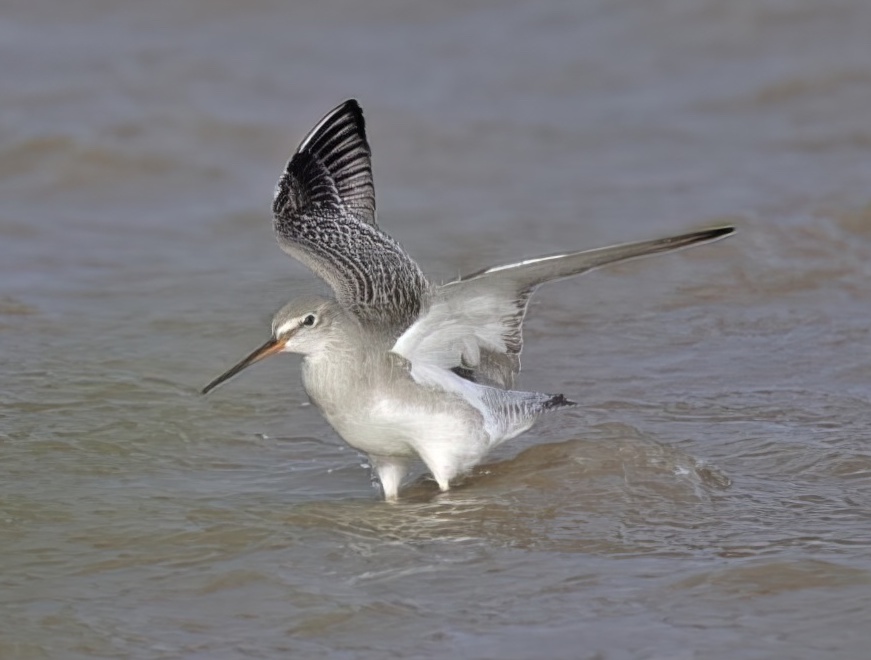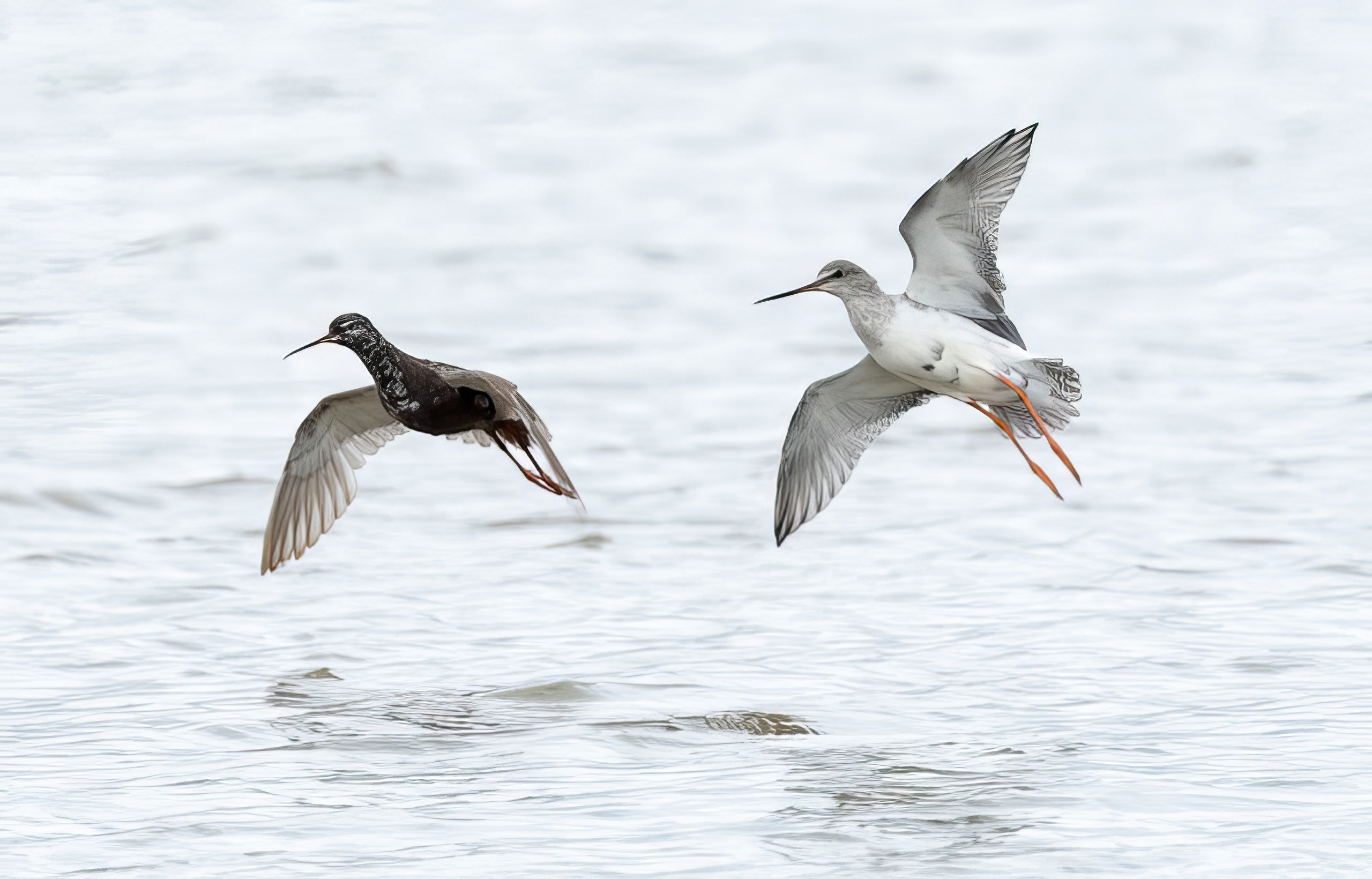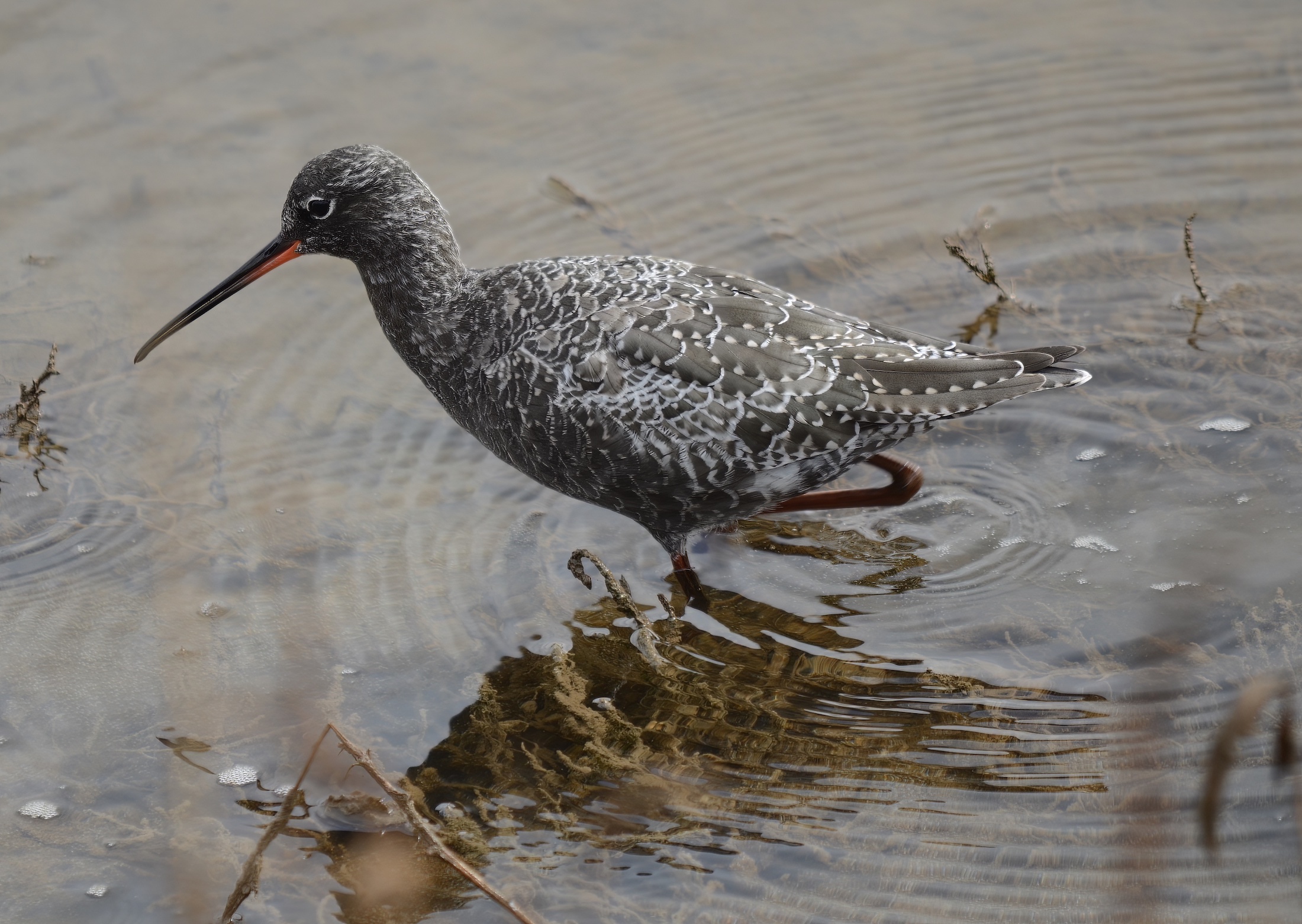Spotted Redshank Tringa erythropus
Passage migrant, scarce in spring but fairly common in autumn. Very scarce but regular in winter.



One of our most attractive waders and handsome in all plumages. LBR reports for the five years to 2018 show that Alkborough Flats is now the best place to see “Spotshank”. It tends to top the charts for numbers of birds in all seasons. Spring passage has always been light and is at its peak in April. In the five years to 2018 it ranged from peak monthly counts of 17 in 2014 to 22 in 2015. Autumn passage usually peaks in September and ranged from 45 in 2015 to 104 in 2018, with an average of 63. Wintering occurred every year with around 13 birds per year. Interestingly the Atlas reported occasional flocks of over 50 on The Wash. There has been nothing like that in recent years with the largest flocks at Alkborough Flats on the Humber every year, with a maximum of 34 there in September 2018. The largest count from The Wash was 29 at Frampton Marsh also in September 2018, the best recent season for them.
Adult Spotted Redshanks moult in staging areas before undertaking a trans-Saharan migration to wintering grounds in the Sahel and northern savanna zones in Mali, Nigeria and Chad. They are present in the tropics mainly October–April, although the first birds reach West Africa in August and the last leave Ethiopia in mid-May. They migrate north along the west European coast late April to mid-May, arriving in Finland from first week of May. An adult bird ringed in The Netherlands on September 10th, 1964 was found dead at Tetney on January 1st, 1969. A second bird colour ringed as a 1CY bird on August 4th, 2019 in Norway was seen alive in Norfolk on August 13th, 2019, and then twice at Frampton Marsh on August 20th and September 22nd, 2019. The value of the Lincolnshire coastal and estuarine areas as part of a key stage of the East Atlantic Flyway cannot be overstated.
(Account as per new Birds of Lincolnshire (2021), included September 2022)
